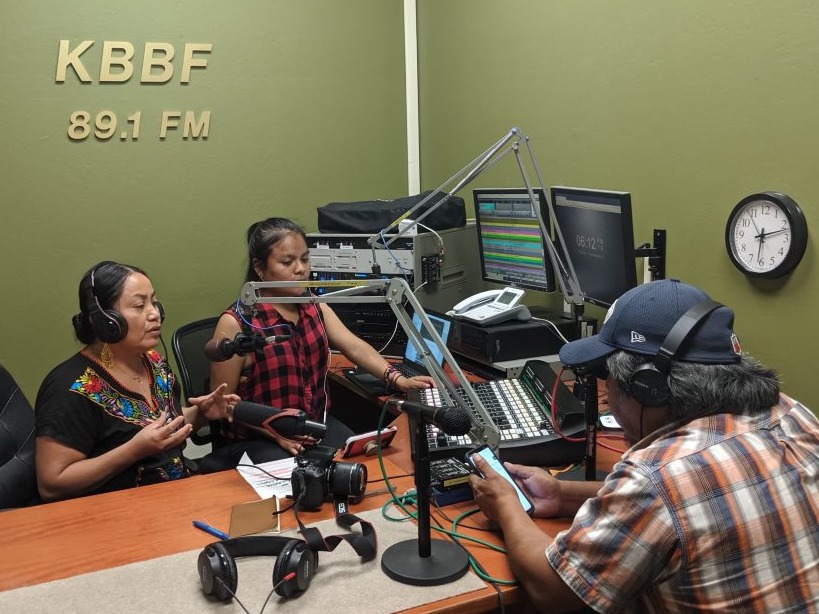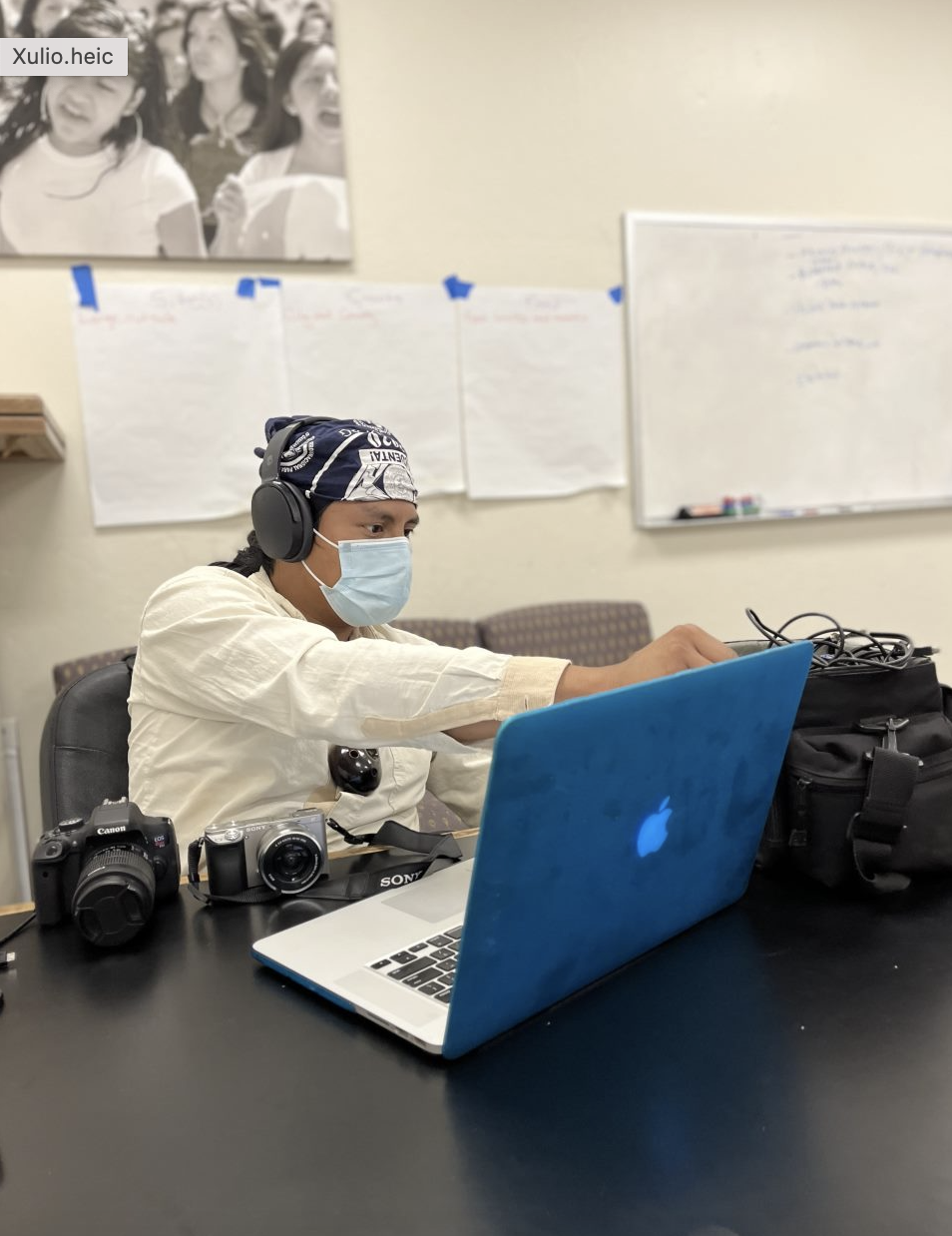
“Labor trafficking” isn’t a term that exists in the Zapotec language. There is no direct translation for “mental health” in several Mam dialects spoken by the Indigenous people of Guatemala. In Mixteco, a language of the Mixtec people of Puebla and Oaxaca, there is no word for “virus.” Instead, translators describe it as “a little bug that eats away at the body.”
And yet much of this information is vital to the everyday lives of these Indigenous peoples, many whom have immigrated to the United States from Latin America.
Since the mid-1980s, the number of immigrants from Indigenous communities in Mexico and South America has risen, with many coming to the U.S. because of poverty, violence, climate change displacement and state marginalization. For example, widespread economic changes in Mexico, and the erosion of farmland in the country’s south, led thousands of Mixtec people to immigrate to California and work in the agricultural sector in recent decades. As a result, dozens of news organizations across the United States are working to translate the seemingly untranslatable, providing information and special programming for their multilingual communities.
Community media organizations such as El Tímpano in Oakland and Radio Indígena 94.1 FM in Oxnard have expanded their language coverage beyond Spanish to reflect the linguistic makeup of the Indigenous communities they are trying to reach, many of whom don’t see themselves as Latino.
According to Antonieta Mercado, a transnational media scholar at the University of San Diego, Indigenous-language media have been a key way to preserve language and culture, while also providing essential information for new migrants.
“There has always been a preoccupation [among these communities] to have a media outlet or a communication outlet, even before social media,” said Mercado, who has been studying communication practices for nearly two decades. “And this is precisely because they never see their stories reflected in national or media outlets.”
Indigenous-language outlets provide necessary info
El Tímpano, which means “the eardrum” in Spanish, is a nonprofit news organization. It was launched in 2018 as a bilingual – English and Spanish – community news outlet and has developed programming in Mam, a language spoken by Mayan communities in Guatemala and southern Mexico. Tumil El Timpano (“Tumil” means news and information in Mam) serves the 10,000 to 20,000 Mam people who live in the Bay Area, mostly in Oakland.
“A big part of addressing news and information needs is being aware of the local resources within their communities that they can access,” said founding director Madeleine Bair.
Lack of access to basic services such as education has led to lower literacy levels among many Indigenous populations. Audio audio and video broadcasts via radio or social media are the most effective way to deliver news and public service announcements, which vary in content and tone.
Tumil El Tímpano, which broadcasts in video on Facebook, covers a wide range of topics, from how to report a hate crime to how to pay a utility bill. “This is information that needs to be repeated, and we will repeat it as long as people are getting the information they need,” said host Martha Calmo Ramirez.
In 2019, Santa Rosa-based KBBF-FM, which is often dubbed the oldest bilingual radio station in the country, drew attention for its down-to-the-minute Spanish and Mixteco reporting of the Kincaid fire that ravaged 770,00 acres of Northern California and forced over 200,000 people to evacuate. The station’s multiple language coverage, broadcast by over 60 volunteers, provided essential information regarding shelter and power outages.
Communities impacted by the news often have different information needs than the general public. For instance, the unprecedented downpours in Southern California earlier this year required more than just climate coverage at Radio Indígena’s station.
“When it rains so much, people can’t work in the fields, and if they can’t work, they can’t pay rent,” said Jorge Ríos, station manager for Oxnard-based Radio Indígena 94.1. The station adjusted its coverage to handle needs and inquiries from the community.
It’s also important to build audience trust, he said. One way to do this is with hosts from the communities they serve.
This could mean training community members to become DJs and broadcast newscasters in their native language. Rios says this helps broaden language base and reach, making radio hosts “megaphones” for their communities. To further their scope, Radio Indígena recently received a grant to hire its first journalist to pursue ambitious, original reporting.
Ramirez, a 23-year-old Mam community leader and recent college graduate, said she kept her native language in addition to learning English and Spanish after immigrating to the U.S. at age 3. “I never thought that my unique Indigenous language could give me so many opportunities and so much power,” she said.
Indigenous news outlets also preserve the culture
To many, Indigenous language programming is also tied to cultural preservation and connection. Outlets often prepare special broadcasts for cultural events such as La Guelaguetza, celebrated annually in the Mexican state of Oaxaca.

Xulio Soriano, who is from Oaxaca, hosts KBBF’s “Radio Autóctona Indigenista” (or Autoctonous Indigenist Radio), a trilingual show broadcast in Mixteco, Triqui and Chatino. He says revitalizing languages for younger generations is a central part of his project. Broadcast on air and on Facebook, the show often draws an audience from the other side of the border, establishing a transnational link that binds these communities together.
Mercado said such community-based outlets ultimately have a two-fold effect: amplifying the linguistic visibility of these groups, both in the United States and in their home countries.
“Marginalized groups are essential to the conversation about who we are as a nation,” Mercado said. “They have had to use those outlets to question both nations to say, ‘We are also part of this.’”
The challenges Indigenous-language outlets face
Meeting the information needs of an audience that speaks one language or dialect does not guarantee that an entire community will be served.
The Bay Area is home to a variety of Mam dialects, some of which are mutually unintelligible. Radio Indígena’s audience mostly speak Mixteco, but many speak Triqui, Zapotec, Purepecha and Chinanteco, according to Ríos.
English words and jargon are also a challenge for hosts, who often find creative ways to translate complicated concepts to their native language – from the coronavirus to labor rights.
Unlike English or Spanish, many of these Indigenous languages “don’t have a special counsel that tells you how the language evolves,” said Ríos, who is of Zapotecan descent but whose family lost the language four generations ago in the process of urban migration. This requires translators and radio DJs to be creative in their descriptions, without sacrificing substance.
Regardless of the hurdles, Ríos says working with these languages fills him with pride. “Every day at work, I feel like I am reconnecting with my roots,” he said.


